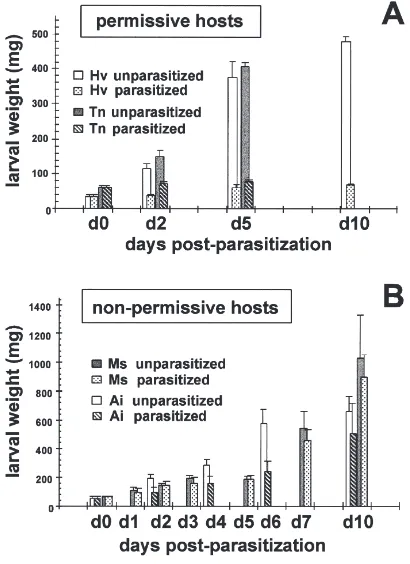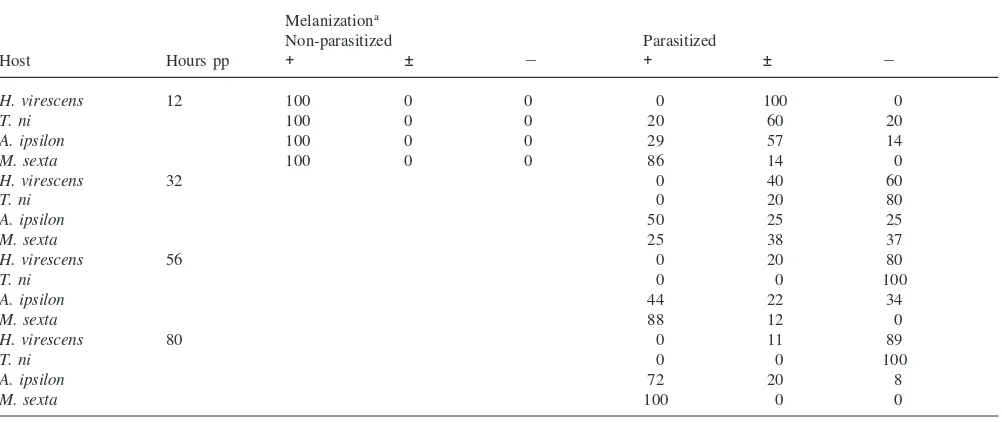Directory UMM :Journals:Journal of Insect Physiology:Vol46.Issue10.Oct2000:
Teks penuh
Gambar




Dokumen terkait
Plotting successive body profiles during the half- stroke in head-fixed co-ordinates allows the changes in body shape and the resultant motion of the abdominal tip relative to the
There is good evidence for activational effects of hormones on the nervous system and behavior in insects, but organizational effects are almost never discussed in the
The objective of this study was to investigate the com- parative developmental characteristics of teratocytes associated with Microctonus aethiopoides Loan larvae in the natural
The four combinations of parasitization: immune responses (capsule formation) of resistant and susceptible host strains (D. melanogaster) parasitized by virulent or avirulent strains
On days 9 and 10 after parasitization, larvae were smaller when the number of parasitoid larvae in the host was large, suggesting that the larvae competed to obtain resources from
Using primers designed to conserved amino acid sequences from known PPOs, we PCR amplified and cloned two PPO genes from the sarcophagid larvae.. The clones encoded polypeptides of
One mutation produces an amino acid substitution when the amino acid sequence is deduced, this mutation was detected in six different populations susceptible and resistant
Expression of one of the two cDNAs in insect cells with a baculovirus vector shows that this cDNA encodes an active amylase with a mobility that corresponds to that of one of the
